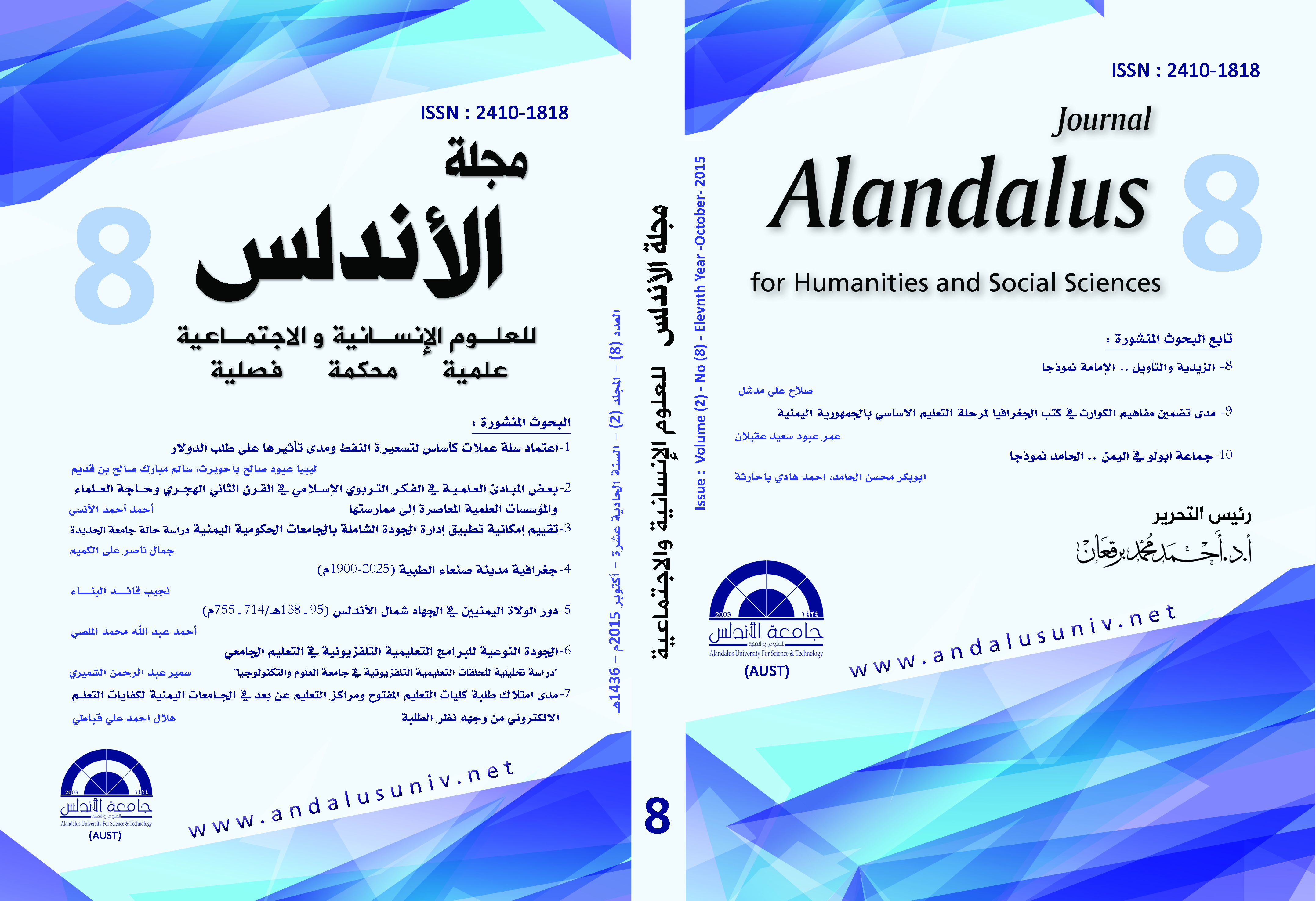To Which Extent the Students of Open Education College and Distance Learning Centers in Yemeni Universities have the Efficiencies of E-Learning from the Perspective of Students 10.12816/0030519د. هـلال أحمد علي القباطي
Main Article Content
Abstract
The study aimed to know the extent to which the students of open education colleges and distant learning centers in Yemeni universities possess the e-learning efficiencies from the perspective of the students themselves. To achieve the aims of the study and answer its questions the researcher has used the analytic descriptive approach to make a list of the most important efficiencies the students study sample had to have in open education colleges and distant learning centers in Yemeni universities according to its e-learning regulations, then prepared final questionnaire included 53 phrase in three axes: Efficiencies of using computer, efficiencies of using internet and efficiencies of using virtual classroom (WIZIQ). The study procedures have applied during the academic year 2014 on a sample of 614 students of different scientific disciplines chosen from open education colleges and distance learning centers in four public and private universities in deliberate way. On the other hand (SPSS) program has been used to calculate averages, standard deviations, (T) test and variance analyses (one-way Anova). The study has showed that the extent of possessing e-learning efficiencies of the study sample was medium in computer and internet axes, so as for the overall average of the three axes while, it was weak in virtual classrooms axis. Meanwhile, the study didn't show any statistically significant differences of e- learning efficiencies in its three axes and total average due to the gender variable (male/ female). The study also showed the superiority of the private universities students to their public university peers and the superiority of the level four students to the students of third and second levels in the degree of possessing the efficiencies of both computer and internet axes, whereas, it didn't show any statistically significant differences in the axis of virtual class rooms. In contrast to the university variable the results showed a statistically significant difference in favor of university of science and technology students in comparison to Sana'a and Taiz universities students in the degree of possessing e-learning efficiencies in the tree axes and the overall average. However, it didn't show any statistically significant differences between the students of university of science and technology and the students of future university in any of the study three axes.

